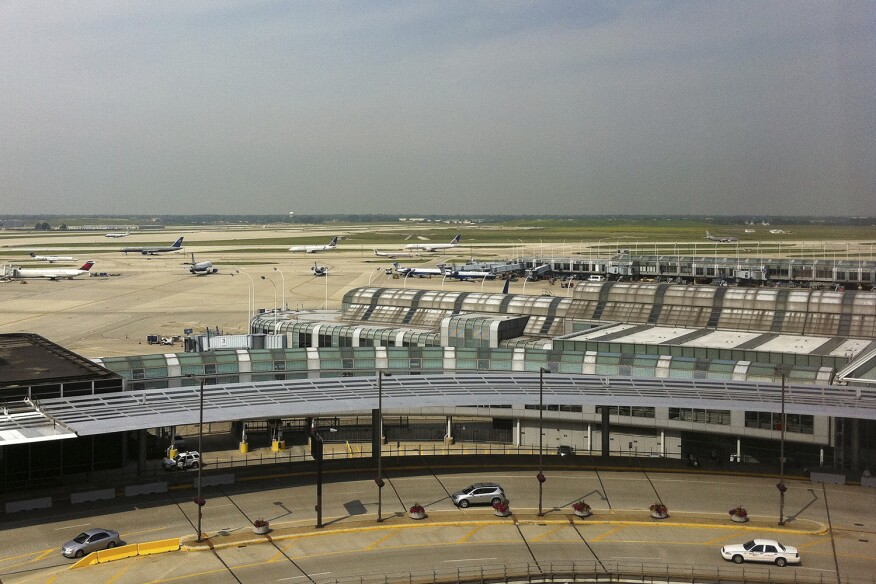
German-born, Chicago-based architect Helmut Jahn, FAIA, was killed in a bicycle accident on Saturday, May 8, about 40 miles west of the city where he first made his name. He most recently worked at his eponymous firm Jahn. Previously he was the executive vice president and director of planning and design of the venerable firm C.F. Murphy Associates, which Jahn renamed Murphy/Jahn in 1981, and then simply Jahn in 2012.
Jahn first came to attention when he left the Illinois Institute of Technology graduate program in 1967 to assist Gene Summers design the Ludwig Mies van der Rohe–inspired McCormick Place, in Chicago, for C.F. Murphy Associates. The classic lines of that lakefront icon carefully extended the mid-20th–century language of the modern master. Following Mies’ death in 1969, architects began to look to the more distant past for relevance, spawning the Postmodern movement of the 1970s and 1980s. Jahn wasn’t part of the Stanley Tigerman–led Chicago Seven group that defined the movement in 1976, but he was the first person added when the group reprised its gallery exhibit the following year.

Jahn forged his own path through those postmodern days of classical forms and bright colors. At a time when an out-of-towners’ reference to Chicago was sure to include Al Capone, Jahn eagerly embraced that imagery. His appearance on the cover of GQ in 1985 evoked smiles and smirks from other Chicago architects when his attire was carefully staged to invoke the early 20th–century mobster. His flashy structures built in the city during that period—like the State of Illinois Center (now the James R. Thompson Center)—only added to his celebrity at a time before the term starchitect was widely used.


Completed in 1985, the State of Illinois Center was simultaneously a triumph and a defeat. Earning the commission for the most important state building outside the capital at the age of 39 was almost as stunning as the design Jahn produced: a relatively squat modern interpretation of the Capitol’s domed rotunda that opened to a broad plaza embracing the adjacent public buildings, Chicago City Hall and the Richard J. Daley Center. Budget overruns, early internal cooling issues, and the generous deployment of 1980s pastel colors led to a decidedly mixed early reception, although the Thompson Center’s recent embrace by a new generation of young preservationists as the “Postmodern People’s Palace” is spurring a long-overdue reevaluation of its design significance. Unfortunately, its future remains undetermined as the state put the property up for sale just days before Jahn’s death.

A 1982 addition to the Chicago Board of Trade Building and a 1987 replacement for the Chicago and North Western Terminal complex continued Jahn’s hybrid exploration of modern-inspired traditional forms, but it was his 1986 United Airlines Terminal at O’Hare International Airport, in Chicago, that showed him at his best just as his local star began to wane.
Several projects that were completed in 1987, including Park Avenue Tower and 425 Lexington Avenue, both in New York, and the 945-foot-tall One Liberty Place, in Philadelphia, extended his reach significantly. One Liberty Place also broke the city’s long-held agreement not to upstage the statue of William Penn atop Philadelphia City Hall. Jahn’s successes—and skyline transformations—continued outside Chicago with the 843-foot-tall Messeturm, in Frankfurt, Germany. It was the tallest tower in Europe when completed in 1990.


Projects like the Sony Center, completed in 2000 in Berlin, demonstrated what the Thompson Center first promised—a popular public space framed by dramatically and subtly sculpted forms of glass and steel, but without explicit references to arches or rotundas, or to short-lived color schemes. Completed in 2005, the Suvarnabhumi International Airport, in Bangkok, created a huge roof supported by sinuous trusses that provided shaded tropical spaces where nature becomes an integral part of a memorable airport terminal.
In the past two decades, the majority of Jahn’s built work in Chicago was rather modest, given his early successes at home and the larger scale typical of much of his international work. But the Jeanne and John Rowe Village (formerly State Street Village) at IIT, completed in 2003; the Margot and Harold Schiff Residences completed in 2007; and the Joe and Rika Mansueto Library at the University of Chicago, completed in 2011, reflect Jahn’s deft and enduring interest in transforming the materials of modern architecture into forms that can serve and delight today and well into the future. At more than 800 feet tall, the firm’s forthcoming sinuous glass structure at 1000 South Michigan could still become Jahn’s tallest in Chicago—although its construction remains on hold following the completion of early foundation work prior to the COVID-19 pandemic. The project builds on the sleek forms Jahn’s designed for 50 West Street (completed in 2018) in New York.

While eventually eschewing the Capone image, Jahn never failed to present a stylish turn. He once had a minivan purchased to transport his son custom-painted to precisely match the green hue of Jahn’s own Porsche. Always a prodigious and highly detailed sketcher, Jahn eventually switched from small custom notecards to an iPad as his favored medium, which allowed easier exchange of his hand-drawn explorations as he traveled across the globe. But while accolades like the Pritzker Prize and the AIA Gold Medal that came to many of his contemporaries always eluded Jahn, he rather quietly continued to turn out elegant, refined, and technologically interesting projects that ensure his enduring legacy.
This article has been updated since first publication.
















